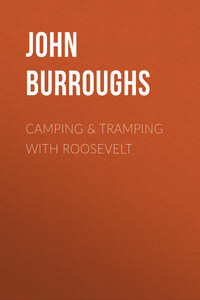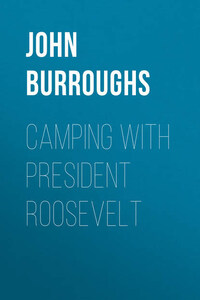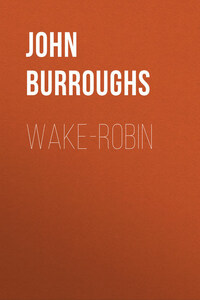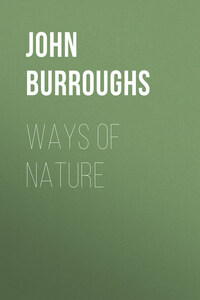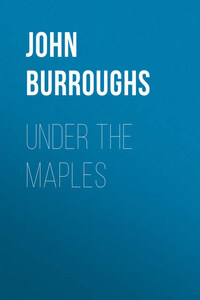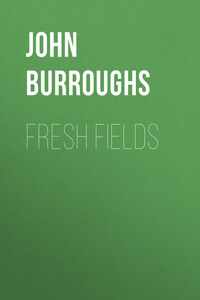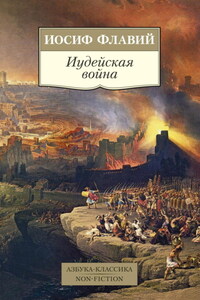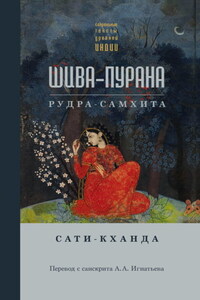This little volume really needs no introduction; the two sketches of which it is made explain and, I hope, justify themselves. But there is one phase of the President's many-sided character upon which I should like to lay especial emphasis, namely, his natural history bent and knowledge. Amid all his absorbing interests and masterful activities in other fields, his interest and his authority in practical natural history are by no means the least. I long ago had very direct proof of this statement. In some of my English sketches, following a visit to that island in 1882, I had, rather by implication than by positive statement, inclined to the opinion that the European forms of animal life were, as a rule, larger and more hardy and prolific than the corresponding forms in this country. Roosevelt could not let this statement or suggestion go unchallenged, and the letter which I received from him in 1892, touching these things, is of double interest at this time, as showing one phase of his radical Americanism, while it exhibits him as a thoroughgoing naturalist. I am sure my readers will welcome the gist of this letter. After some preliminary remarks he says: —
"The point of which I am speaking is where you say that the Old World forms of animal life are coarser, stronger, fiercer, and more fertile than those of the New World." (My statement was not quite so sweeping as this.) "Now I don't think that this is so; at least, comparing the forms which are typical of North America and of northern Asia and Europe, which together form but one province of animal life.
"Many animals and birds which increase very fast in new countries, and which are commonly spoken of as European in their origin, are really as alien to Europe as to their new homes. Thus the rabbit, rat, and mouse are just as truly interlopers in England as in the United States and Australia, having moved thither apparently within historic times, the rabbit from North Africa, the others from southern Asia; and one could no more generalize upon the comparative weakness of the American fauna from these cases of intruders than one could generalize from them upon the comparative weakness of the British, German, and French wild animals. Our wood mouse or deer mouse retreats before the ordinary house mouse in exactly the same way that the European wood mouse does, and not a whit more. Our big wood rat stands in the same relation to the house rat. Casting aside these cases, it seems to me, looking at the mammals, that it would be quite impossible to generalize as to whether those of the Old or the New World are more fecund, are the fiercest, the hardiest, or the strongest. A great many cases could be cited on both sides. Our moose and caribou are, in certain of their varieties, rather larger than the Old World forms of the same species. If there is any difference between the beavers of the two countries, it is in the same direction. So with the great family of the field mice. The largest true arvicola seems to be the yellow-cheeked mouse of Hudson's Bay, and the biggest representative of the family on either continent is the muskrat. In most of its varieties the wolf of North America seems to be inferior in strength and courage to that of northern Europe and Asia; but the direct reverse is true with the grizzly bear, which is merely a somewhat larger and fiercer variety of the common European brown bear. On the whole, the Old World bison, or so-called aurochs, appears to be somewhat more formidable than its American brother; but the difference against the latter is not anything like as great as the difference in favor of the American wapiti, which is nothing but a giant representative of the comparatively puny European stag. So with the red fox. The fox of New York is about the size of that of France, and inferior in size to that of Scotland; the latter in turn is inferior in size to the big fox of the upper Missouri, while the largest of all comes from British America. There is no basis for the belief that the red fox was imported here from Europe; its skin was a common article of trade with the Canadian fur traders from the earliest times. On the other hand, the European lynx is much bigger than the American. The weasels afford cases in point, showing how hard it is to make a general law on the subject. The American badger is very much smaller than the European, and the American otter very much larger than the European otter. Our pine marten, or sable, compared with that of Europe, shows the very qualities of which you speak; that is, its skull is slenderer, the bones are somewhat lighter, the teeth less stout, the form showing more grace and less strength. But curiously enough this is reversed, with even greater emphasis, in the minks of the two continents, the American being much the largest and strongest, with stouter teeth, bigger bones, and a stronger animal in every way. The little weasel is on the whole smaller here, while the big weasel, or stoat, is, in some of its varieties at least, largest on this side; and, of the true weasels, the largest of all is the so-called fisher, a purely American beast, a fierce and hardy animal which habitually preys upon as hard fighting a creature as the raccoon, and which could eat all the Asiatic and European varieties of weasels without an effort.
